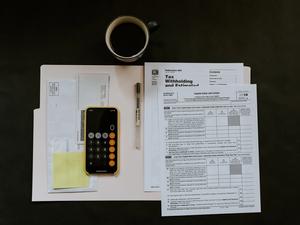
Manage the cash
flow of your
business
The importance of cash flow is often overlooked by starting entrepreneurs. We dive deeper into what cash flow exactly is and how you can use it in your advantage for your business.
You've probably heard the term "cash flow" quite often, and you're likely aware that the success of your business hinges on its cash flow. But what exactly is it, and how can you ensure that you no longer face cash flow problems? We'll show you all the details through a series of examples.
The difference between profit and cash flow
We won't bombard you with accounting jargon, but it's good to look at the definitions of profit and cash flow. The simplest explanation of profit is: "The money left over after you've paid all your expenses." This is often calculated over a specific period, like a quarter or a year.
Cash flow, on the other hand, is the movement of money into and out of a business. It involves the actual income and expenses of your business. It's not about the figure on paper but about the exact amount in your bank account or cash on hand.
For starting entrepreneurs, it's often more important to look at your cash flow rather than your profit. Profit is a figure on paper but doesn't show whether you can pay your bills tomorrow.
How does it work in practice
For example, if someone books an appointment with your business but the appointment is a month away, you can immediately see the profit margin for that appointment as profit for your business within a certain period. However, the appointment is a month away and will be paid for on-site; your cash flow will look very different. You'll need to purchase the supplies for your appointment in advance. So, you may have a paper profit, but it's not immediately reflected in your bank account.
The consequences of poor cashflow management
If there's one future appointment that hasn't been paid for yet, the consequences are manageable. But imagine having a fully booked schedule where all appointments are paid for on-site, and you have to purchase all the supplies in advance. It's not surprising that at some point, there's no balance left in your account even though you're showing a hefty paper profit. This could make it difficult to pay yourself a salary or make a down payment for an event where all your potential customers are going, which requires more money than you have in your account.
Smart ways for a healthy cash flow
There are two basic principles to give your business a healthier cash flow. You can change the timing of when you receive money or when you have to pay suppliers.
Ask your suppliers if you can purchase products on account. This increases the likelihood that you'll receive revenue from sold goods before you've had to pay the costs to your supplier.
Ask customers to pay in advance and avoid billing them. An easy way to receive payments in advance can be arranged through Vev. Within a few minutes, you can manage your online payments via Vev, allowing customers to pay in full in advance or make a down payment.
Additionally, it's wise to keep some cash reserve in your business account. This way, you can cover unexpected costs with the reserve still in your account.
Also, purchasing expensive equipment can take a significant toll on your cash flow. There are often options to rent or lease equipment. This way, you don't have to make a costly investment and don't run the risk of your purchased equipment becoming outdated. You simply cancel the rental contract for your old equipment and look at new options in the market, letting you work with the most innovative equipment.
If you find it interesting to learn more about your business's cash flows, you can always DM us on Instagram.
Create your own page in 3 simple steps
Describe your business
Vev will create a custom page for you.
Get started
Click around to see how Vev works.
Customize your page
Add photos, descriptions and set your pricing.


